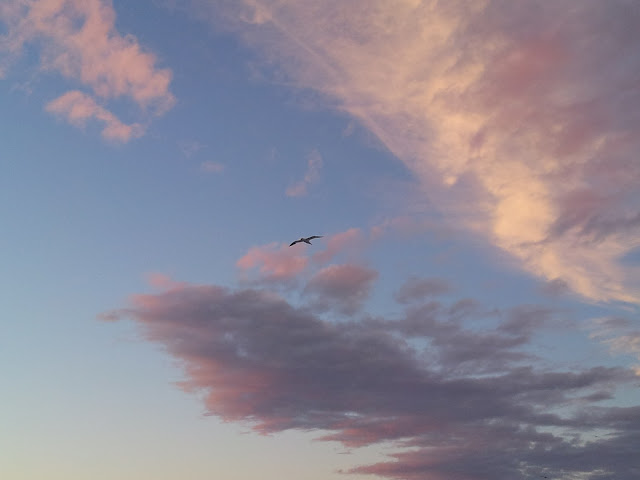![]() |
| Jack Vettriano, Self-Portrait (artist's copyright) |
A couple of years ago I was chatting with the director of a provincial museum. This museum does not have much public funding and so has to charge admission, and he was describing the challenges of persuading people to pay the small sum asked of them. In recent times, he said, only one artist had really drawn the crowds, and that was
Jack Vettriano (b.1951). As he mentioned the name he looked to see my reaction, which was not (I have to say) desperately enthusiastic. I had been to the exhibition in question and found it rather soulless. However, I could see that the show's success had been significant, both financially and in terms of increasing awareness of the museum and its architectural and artistic wonders.
Jack Vettriano is that rare creature, a painter whose activities arouse strong feelings in all kinds of people, from his famous collectors and feisty fans to the critics who are shocked and appalled by his success. His
current retrospective in Glasgow has attracted some negative write-ups, while his supporters have used the 21st century soapbox of the on-line comments section to air their views.
![]() |
| Jack Vettriano, Along Came a Spider (artist's copyright) |
To date I think the best article on him is
Lynn Barber's interview from 2004, when Vettriano was in the limelight after 'The Singing Butler' achieved the highest price for a Scottish painting at auction. She was straightforward as usual. 'Anyway,' she wrote, 'the fact that there is all this exciting 'story' in the images makes it easy to ignore the deadly flatness of the technique.
'This is the answer to the question: why don't art critics take Vettriano seriously? Because there is nothing of any interest in the way he paints - Vettriano is to painting what Jeffrey Archer is to prose. Nevertheless, he is very interesting both as a person and as a phenomenon; a self-taught painter who, by depicting his own fantasies, has somehow managed to reach an audience who don't normally take any interest in art. He is also - I was pleased to discover - a very modest, articulate, friendly interviewee.'
![]() |
| Jack Vettriano, The Singing Butler (artist's copyright) |
Whatever his weaknesses as a painter, Vettriano does what he does very well. He is so consistent that you can identify one of his pictures instantly, and he has a talent for making images that are slightly mysterious, nostalgic and glamorous (in the 1980s Helmut Newton sense). His men and women remind me of characters from old hard-boiled detective novels and thrillers, or perhaps that's the lighting. The scenes hover between eras from the 1920s to the present, without really belonging anywhere - they are fanciful rather than historical. The kinkier pictures are un-PC but, in the great scheme of things, hardly shocking. Beyond that, what is there to say? Except that struggling art museums HAVE TO attract big crowds, or they will not survive.
I find Vettriano's case intriguing partly because I've just finished writing a book about landscape painter
Edward Seago (1910-74), which will be published by Lund Humphries next year. In his lifetime Seago was hugely popular, to the extent that the queues before his exhibitions were reported in the press.
![]() |
| Edward Seago, The Wild Beast Show, 1932 (artist's estate/Portland Gallery) |
‘Queue Here for Seago’, announced the
Eastern Daily Press on 22 November 1961: 'At 5 o’clock this morning, two old ladies dropped anchor outside Colnaghi’s gallery in Bond Street. By 9 o’clock, when the floodgates opened, the waiting multitude looked like a convention of Top People. Another private view of watercolours by Edward Seago, the Norfolk artist, had begun.
'Having pounced on their prey, the Seago-seekers had to stand at attention for another hour while the embargo printed in red on their invitation cards ran out: "It is regretted that no Drawings can be sold before 10am on the day of the Private View."'
![]() |
| Edward Seago, Winter Landscape, Norfolk , c1960 (artist's estate/Portland Gallery) |
Like Vettriano, Seago was hard-working, prolific and an astute businessman - he sent out 5000 personal Christmas cards to collectors every year and exhibited all over the world. He was modest, charming, entertaining and self-centred (a not unusual quality); he was greatly loved but rather unhappy, and his behaviour was at times quite odd - researching his life and work has been fascinating.
His paintings, mostly landscapes in oils and watercolour, were immediately recognisable and often delightful. With the art world going crazy for abstraction and dour post-war introspection, art lovers looking for something enjoyable and uplifting found it in Seago, whose self-avowed mission was to record the fleeting beauties of nature. The Queen Mother and the Duke of Edinburgh were fans, even friends; the critics were not. I doubt there was an artist who outsold Seago in his pomp during the 1950s and 1960s. He handled paint with considerable skill and also wrote entertainingly, penning a number of thoughtful autobiographical books. Not all of his paintings are great, but the best of them can make you pause, look again, relax and give in to the pleasure of looking.
'Edward Seago' will be published by Lund Humphries in June 2014. His estate is represented by
The Portland Gallery.

































































































.jpg)
.jpg)
